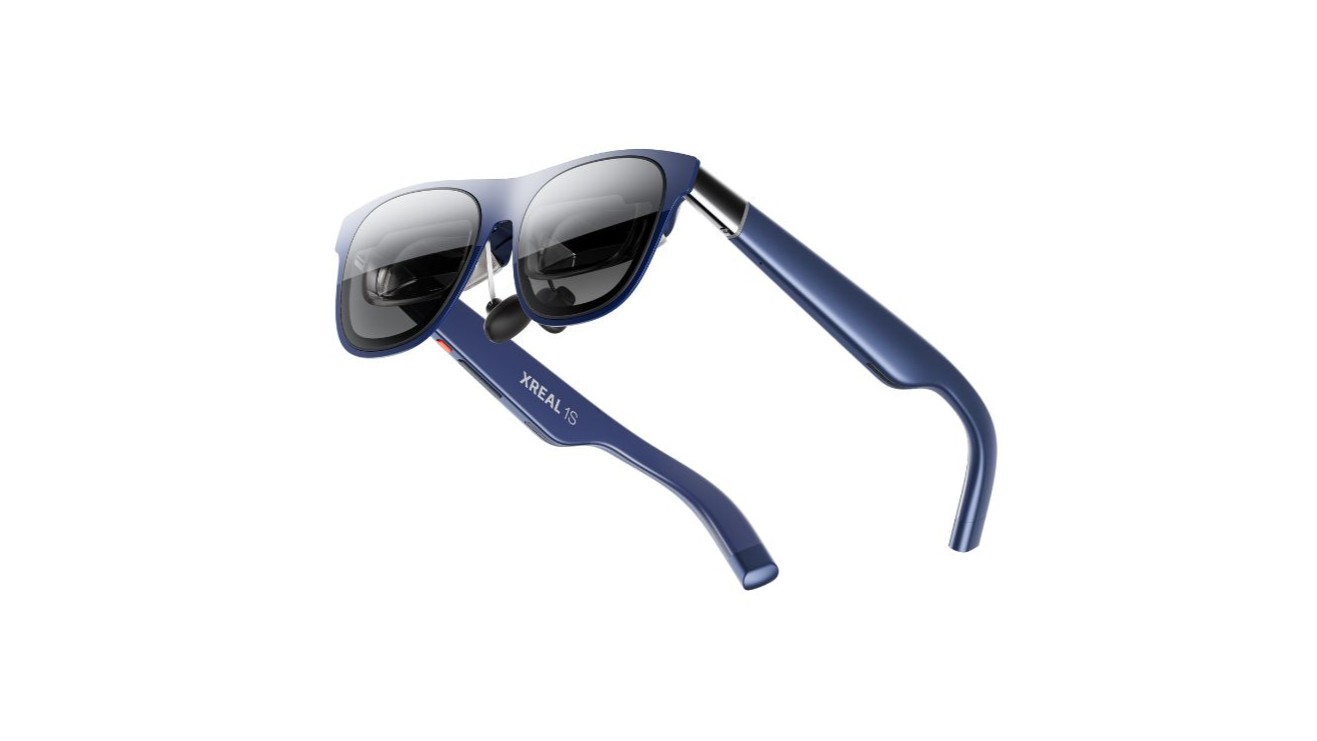Garmin Venu 3 vs. Forerunner 265: Two classics with plenty left in the tank
Despite identical prices and similar levels of quality, the Venu 3 and Forerunner 265 cater to very different people.
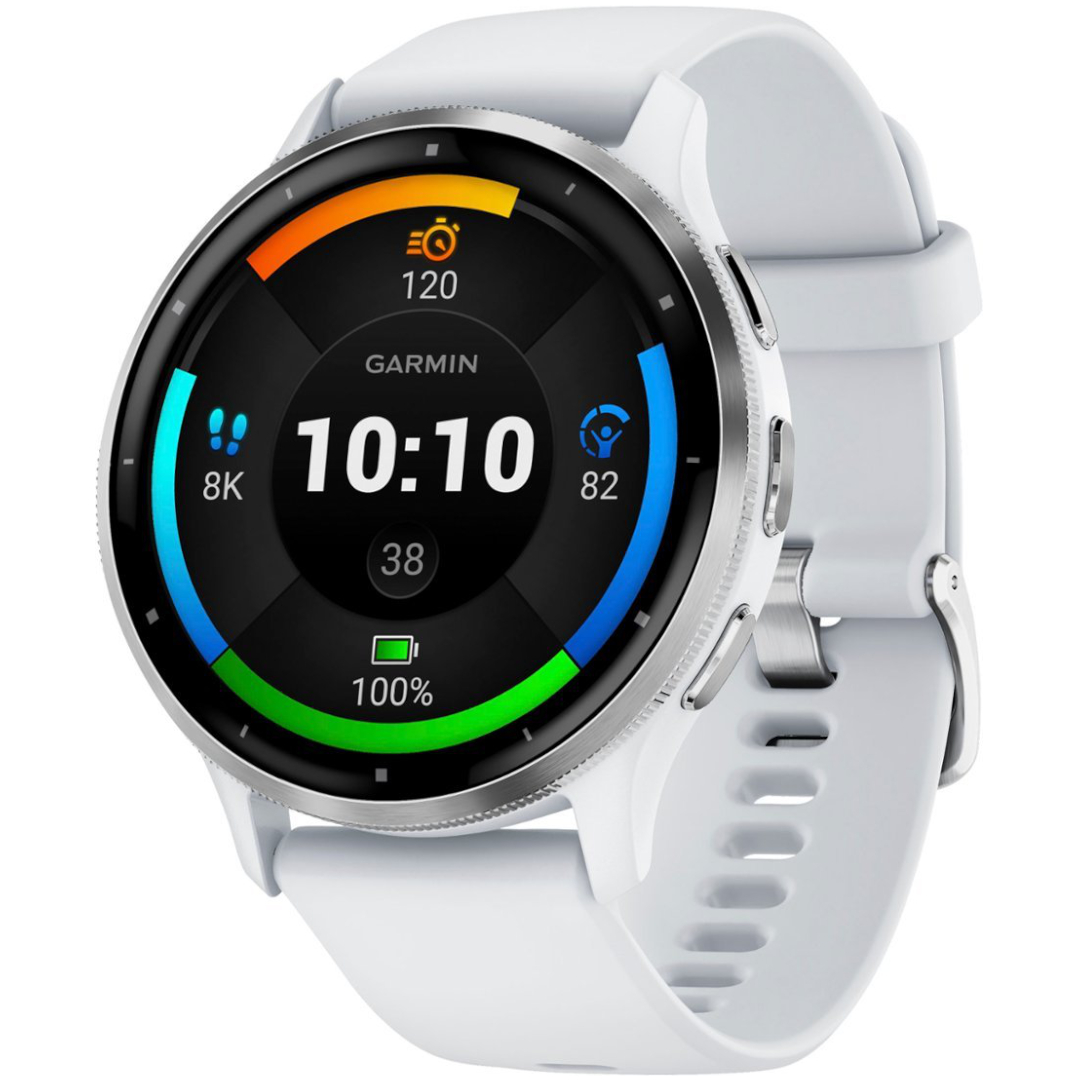
For gym-goers
The Venu 3 strikes a delicate balance, giving mainstream watch fans the Bluetooth calling, ECG readings, sleep coaching, and beautiful AMOLED display they've come to expect, while also delivering two-week battery life and niche fitness tools like animated workouts, coaching, and recovery time that only a true fitness watch can deliver.
Pros
- Thinner with larger displays
- Stainless steel bezel
- ECG and skin temp readings
- Mic & speaker for calling, assistant
- Wheelchair mode
Cons
- No training load or workout suggestions
- No dual-band GPS
- Fewer, less ergonomic buttons
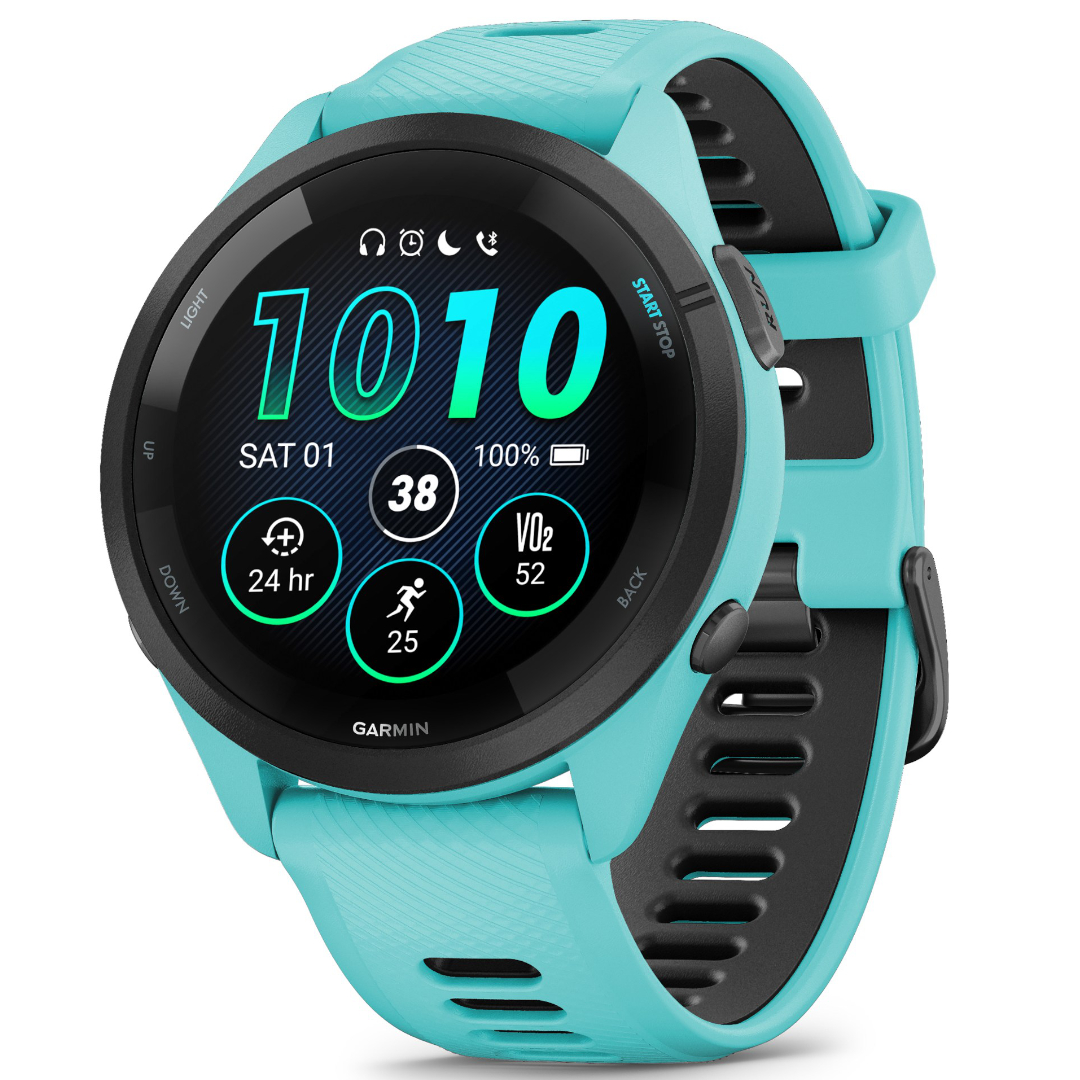
For serious runners
The Forerunner 265 is less balanced and more specialized, targeting runners, cyclists, and triathletes with vital tools like training load and readiness, but lacking the Venu 3's mic, speaker, and ECG/ skin temp readings. It's less stylish but easier to use during workouts, and equally long-lived.
Pros
- Daily workout suggestions
- Training load focus & effect
- More accurate GPS tracking
- Better watch strap & buttons
- Track running & multisport mode
Cons
- Smaller display
- Thicker all-plastic design
- No mic/speaker, fewer sensors
The Garmin Venu 3 and Forerunner 265 are two last-gen watches that either have a refreshed version (the Forerunner 570) or will have one soon (the Venu 4). But Garmin often keeps its older watches available for years, and with new Garmin watch prices climbing, either of these excellent 2023 watches remains a great training companion.
That said, the Venu 3 and Forerunner 265 are very different watches, despite sharing a $450 price tag and core features. Venu watches target indoor athletes or the fashion-conscious, while Forerunners cater to runners and eschew a lot of traditional "smarts" — at least until the Forerunner 970 and 570 added them.
Until the Venu 4 arrives, the Venu 3 still tops our best fitness smartwatch list, while the Forerunner 265 remains our best running watch pick because of its affordability and usefulness. They're both great, in other words, but you can only choose one. Let's compare the Garmin Venu 3 vs. Forerunner 265.
Garmin Venu 3 vs. Forerunner 265: Design and display
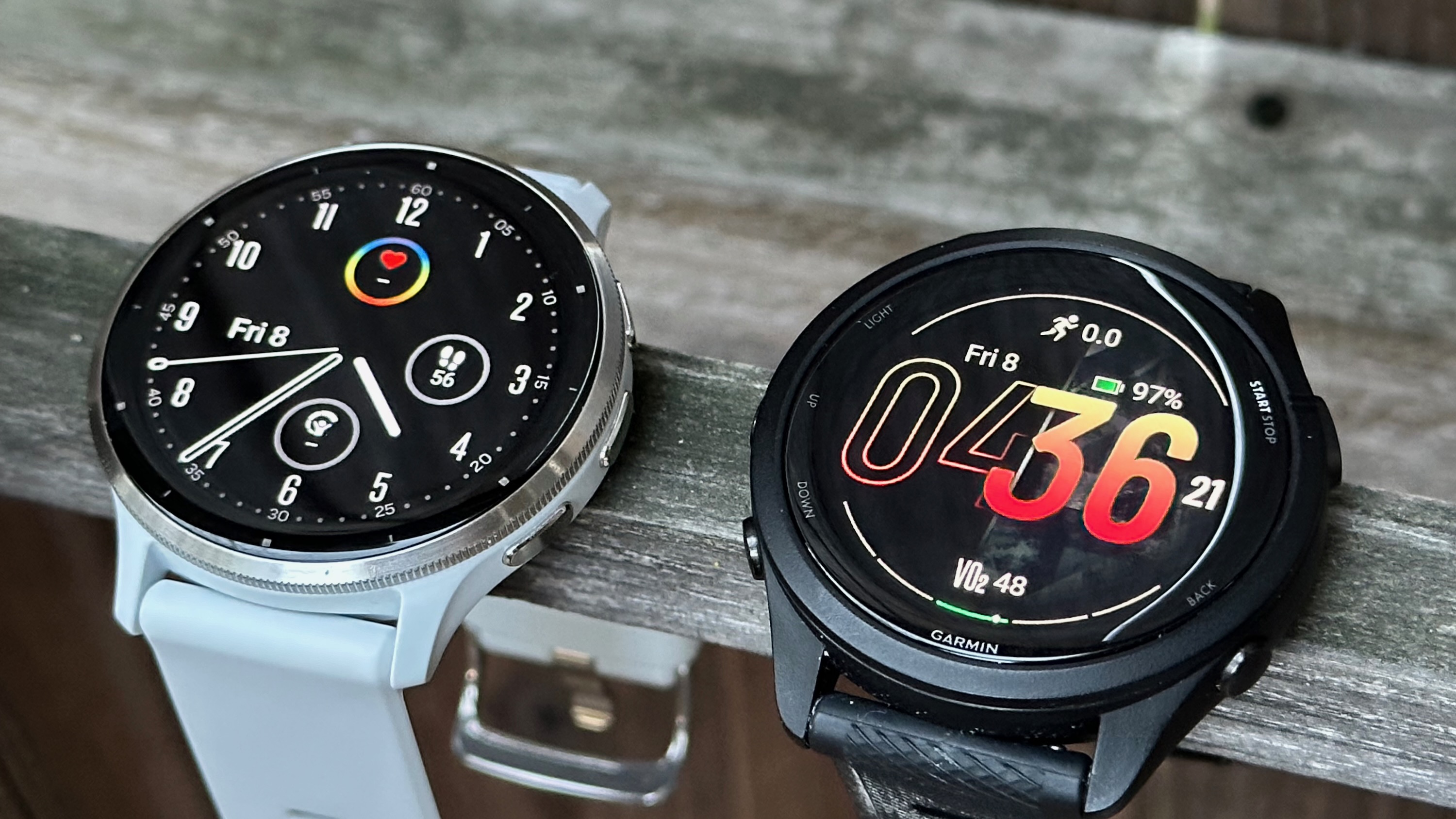
Category | Garmin Venu 3 / 3S | Garmin Forerunner 265 / 265S |
|---|---|---|
Display | 1.4-inch (454x454) or 1.2-inch (390x390) AMOLED touchscreen | 1.3-inch (416x416) or 1.1-inch (360x360) AMOLED touchscreen |
Material | Fiber-reinforced polymer | Fiber-reinforced polymer |
Bezel | Stainless steel | Polymer |
Dimensions | 45 x 45 x 12mm; 41 x 41 x 12mm | 46.1 x 46.1 x 12.9mm; 41.7 x 41.7 x 12.9mm |
Weight | 47g; 40g | 47g; 39g |
Quick release bands | 22mm; 18mm | 22mm; 18mm |
Protection | 5ATM; Gorilla Glass 3 | 5ATM; Gorilla Glass 3 |
Colors | 3: Silver/ Whitestone; Slate/ Black; 3S: Slate/ Pebble Grey; Silver/ Sage Grey; Soft Gold/ French Gray, Dust Rose, or Ivory. | 265: Black/ Whitestone & Tidal Blue; Black/ Black & Powder Grey; Black/ Aqua & Black; 265S: Black/ Black & Amp Yellow; Black/ Whitestone & Neo Tropic; Black/ Light Pink & Whitestone |
If you're concerned about how stylish your fitness watch looks, the Garmin Venu 3 is the obvious choice, thanks to the stainless steel bezel and the skinnier, more tapered case design. The Garmin Forerunner 265, with its thicker, all-plastic look, is for runners who are more concerned about what's beneath the surface.
Both Garmin watches offer small "S" sizes, giving small-wristed athletes some flexibility. The difference is that the Venu 3S, though 1g heavier than the 265S, gives you a more usable 1.2-inch display — a more palatable downgrade than 1.1 inches.
The 1.3-inch Forerunner 265 also has a larger bezel, making the Venu 3's 1.4-inch display look comparatively vast. A 1.3-inch display is fairly standard for any smartwatch, with plenty of room for data and notifications. But there's wasted space compared to the Venu 3 or Forerunner 570.
Both watches are bright enough for normal use — and brighter indoors than older Garmin watches with MIP displays — but they're dim with washed-out colors in direct sunlight. Many 2025 Garmin watch displays have doubled brightness (2,000 nits), which may affect your decision to buy either.
Get the latest news from Android Central, your trusted companion in the world of Android
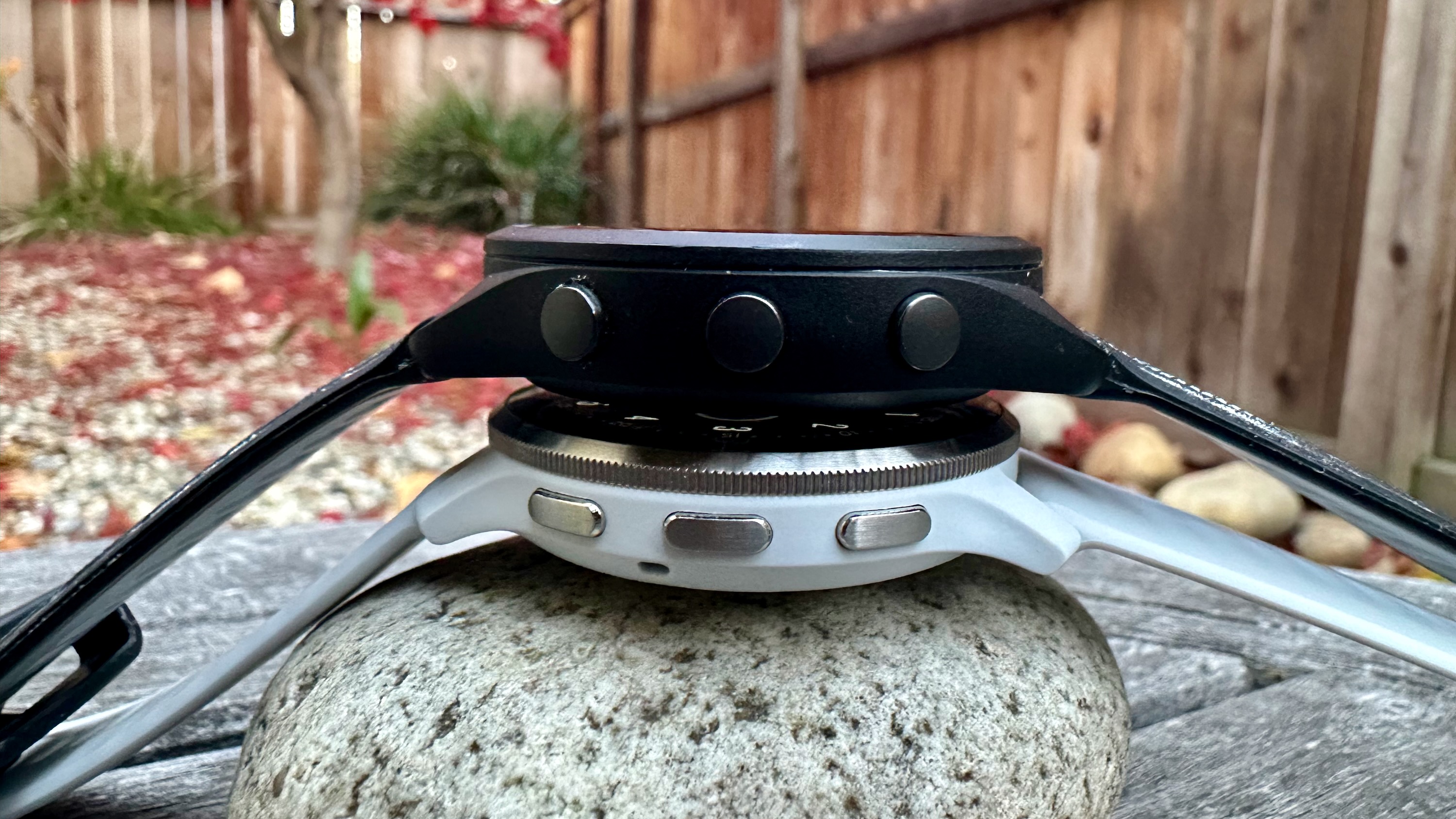
The Forerunner 265 is less dependent on touch controls than the Venu 3, thanks to its dedicated up/down buttons. They offer tangible buttons to press during a run instead of relying on touch controls with sweaty fingertips during a workout.
The Venu 3's three-button design gives you a dedicated middle button for shortcuts that can pull up your favorite tools, but the Forerunner 265 also has configurable shortcuts. While the Venu 3 buttons aren't as easy to press as the 265 buttons, they're more subtle, blending in along the bezel edge.
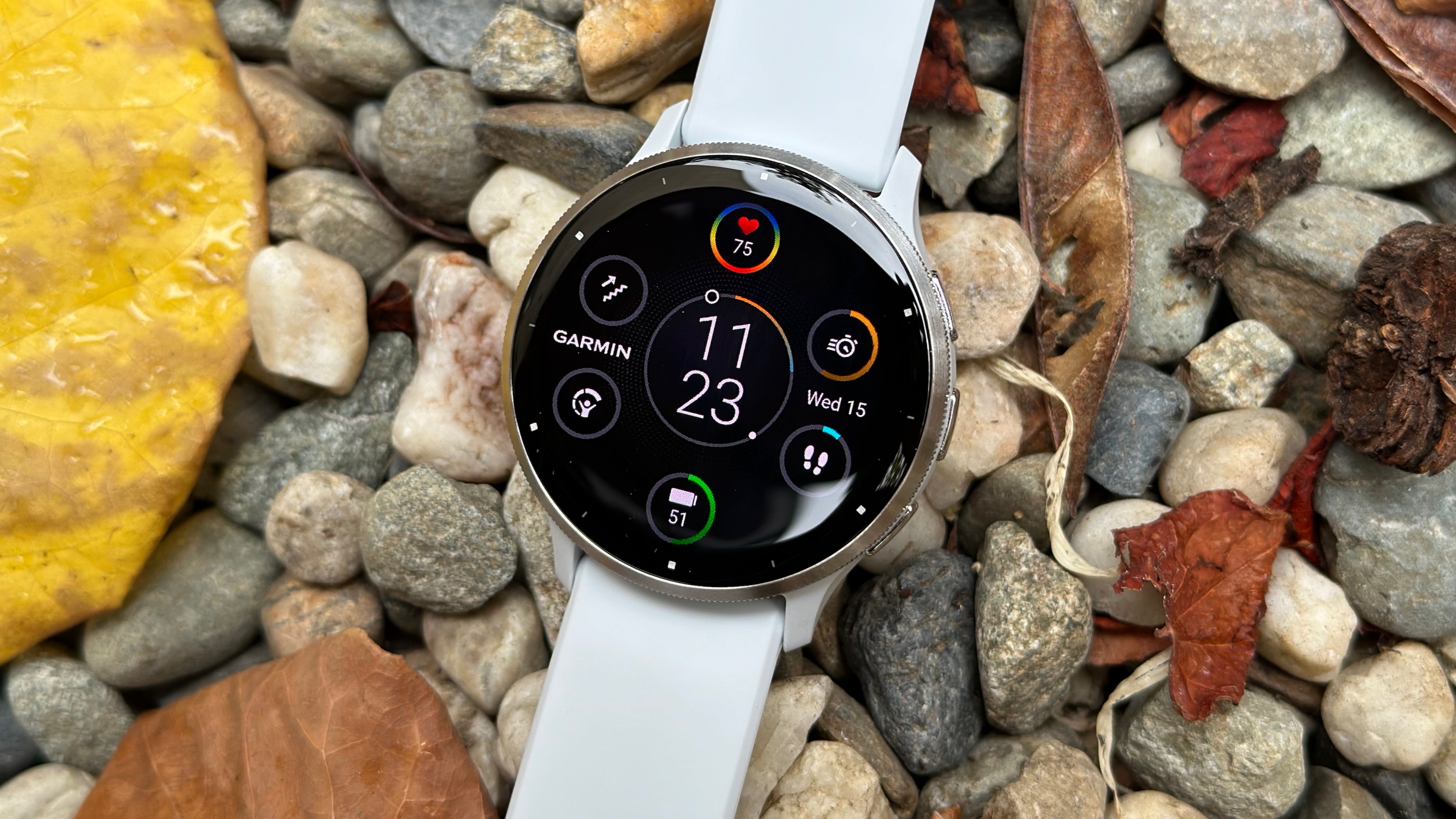
Both have the same Gorilla Glass 3 protection, which isn't as advanced as the sapphire glass you often get in this price range. Either watch will withstand little bumps and bruises, but may not come out of a serious fall unscathed.
The larger and smaller models support Quick Release 22mm or 18mm bands, respectively, making them easy to swap out with cheap band replacements. The default Forerunner 265 silicone band is sportier and far more comfortable than the Venu 3's, which lacks breathability and feels more rigid.
Garmin Venu 3 vs. Forerunner 265: Hardware and battery
Category | Garmin Venu 3 | Garmin Forerunner 265 |
|---|---|---|
Sensors | Elevate 5 HRM with ECG and skin temperature; Pulse Ox (SpO2); accelerometer; ambient light sensor; barometric altimeter; compass; gyroscope | Elevate v4 HRM; Pulse Ox, accelerometer; ambient light sensor; barometric altimeter; compass; gyroscope |
GNSS | GPS, GLONASS, GALILEO | GPS, GLONASS, GALILEO |
Accuracy modes | All-Systems GNSS only | All-Systems GNSS; dual-band GPS; SatIQ mode |
Connectivity | Garmin Pay (NFC), Bluetooth, ANT+, Wi-Fi | Garmin Pay (NFC), Bluetooth, ANT+, Wi-Fi |
Music storage | 8GB | 8GB |
Mic & speaker | Yes | No |
Battery (Smartwatch) | 3: 14 days; 3S: 10 days | 265: 13 days; 265S: 15 days |
Battery (GPS only) | 3: 26 hours; 3S: 21 hours | 265: 20 hours; 265S: 24 hours |
Battery (Highest accuracy) | 3: 20 hours; 3S: 15 hours | 265: 14 hours; 265S: 15 hours |
Garmin doesn't advertise what CPUs or memory goes into its watches. We can assume, however, that they're comparable here: both are 2023 watches, and the December 2023 Forerunner update added software UI updates lifted directly from the Venu 3. Speed-wise, you should get a comparable experience.
They also share most of the same key sensors. You get an accelerometer and gyroscope for tracking wrist movements for running dynamics and exercise recognition; an altimeter to judge effort at elevation; a compass for better exercise data; an ambient light sensor to change the display brightness in dim settings; and Pulse Ox blood oxygen data.
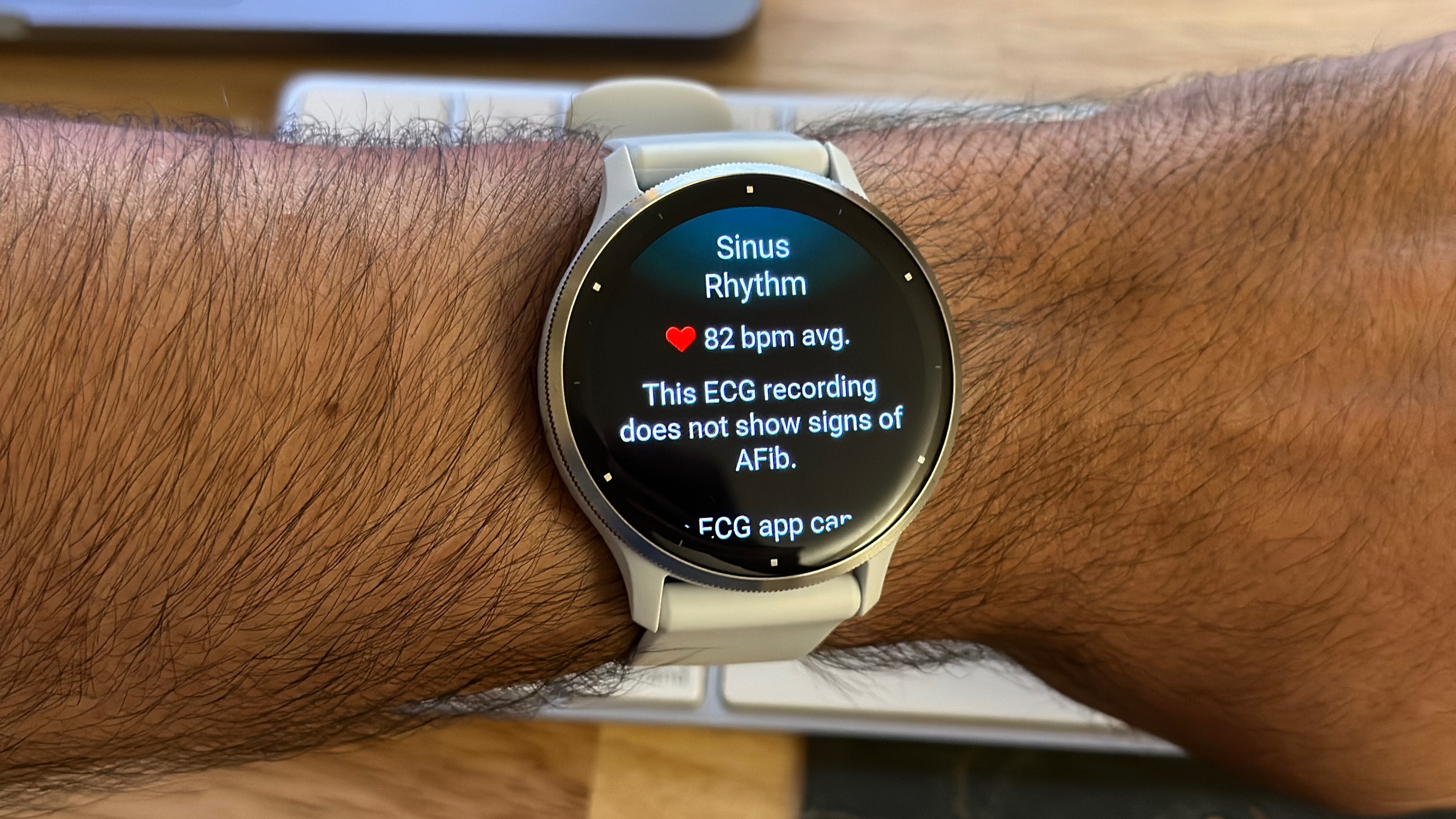
Where the Venu 3 pulls ahead is its Elevate v5 heart rate sensor, with manual ECG readings during the day and passive skin temperature readings at night. Two years later, premium models like the Fenix 8 still use these 5th-gen sensors.
If you're concerned about heart health or want to track nightly skin temperature variation for signs of illness or poor sleeping conditions, then the Venu 3 is the obvious choice. Forerunner fans will have to choose the Forerunner 970 to get both sensors, and it costs much more than the 265.
Otherwise, the Elevate v4 sensor was pretty darn accurate in our HR tests over the years, but the Elevate v5 is a bit more dependable, particularly for high-effort anaerobic workouts.
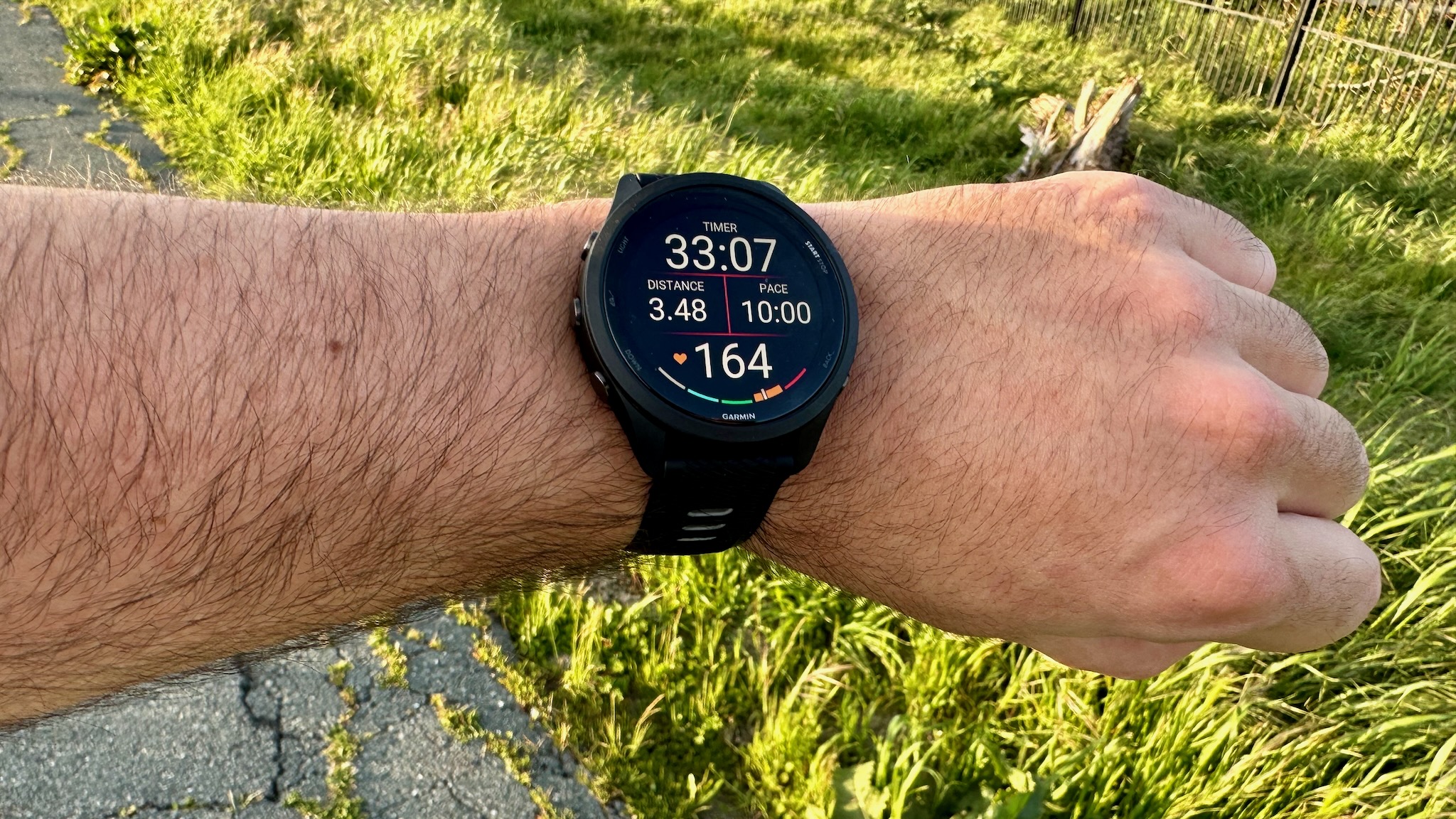
Where the Forerunner 265 pulls ahead is in GPS accuracy. The Venu 3 is better than your average watch thanks to its all-systems GNSS tracking, which essentially uses both GPS and another system like GLONASS or GALILEO to pinpoint your position and avoid system errors.
In our review, however, it fell slightly short compared to a dual-band GPS Forerunner watch. The Forerunner 265 uses multiple GNSSs at once and both the L1 and L5 GPS frequencies, which give you multiple angles on your location and updates in near-real time. For the best possible results with no room for doubt, you'll want a Forerunner.
The Venu 3 beats the Forerunner 265 for battery life, but only by one day, and the smaller 265S crushes the Venu 3S by five days. In terms of GPS battery life, the Venu 3's all-systems mode lasts 20 hours, while the Forerunner 265's SatiQ mode — which uses dual-band if the signal is impeded but otherwise uses GPS only to save battery — lasts just 16 hours.
Garmin Venu 3 vs. Forerunner 265: Features and software
Category | Software |
|---|---|
Available on Forerunner 265 and Venu 3 | Enhanced body battery, Morning Report, Sleep Score and insights, nap detection, Red Shift mode, Intensity Minutes, Fitness Age, HRV status, stress tracking, women's health tracking, Health Snapshot, recovery time, animated workouts, Garmin Coach, wrist-based running dynamics & power, Livetrack |
Only available on Forerunner 265 | Daily suggested workouts, race-adaptive training plans, race predictor, training status/ effect/ load/ readiness, acute load, downloadable courses, Performance Condition, Pacepro, Track Running, Multisport mode |
Only available on Venu 3 | Sleep Coach, ECG readings, skin temperature, passthrough voice assistant, Bluetooth calling, Jet Lag advisor, Meditation, wheelchair mode |
Garmin watches have so many features packed into them that running through each feature would take more time than you want to spend reading this article. So we tried to highlight all of the major features that you can expect from either watch, as well as those exclusive to each.
To no one's surprise, the Forerunner 265 clearly wins for runners. Even if some tools like Performance Condition aren't as useful as they could be, runners will want to know the post-run training load for an activity and whether it was aerobic or anaerobic. Specific tools like the Outdoor Track Running activity and multisport mode are hard to lose, too.
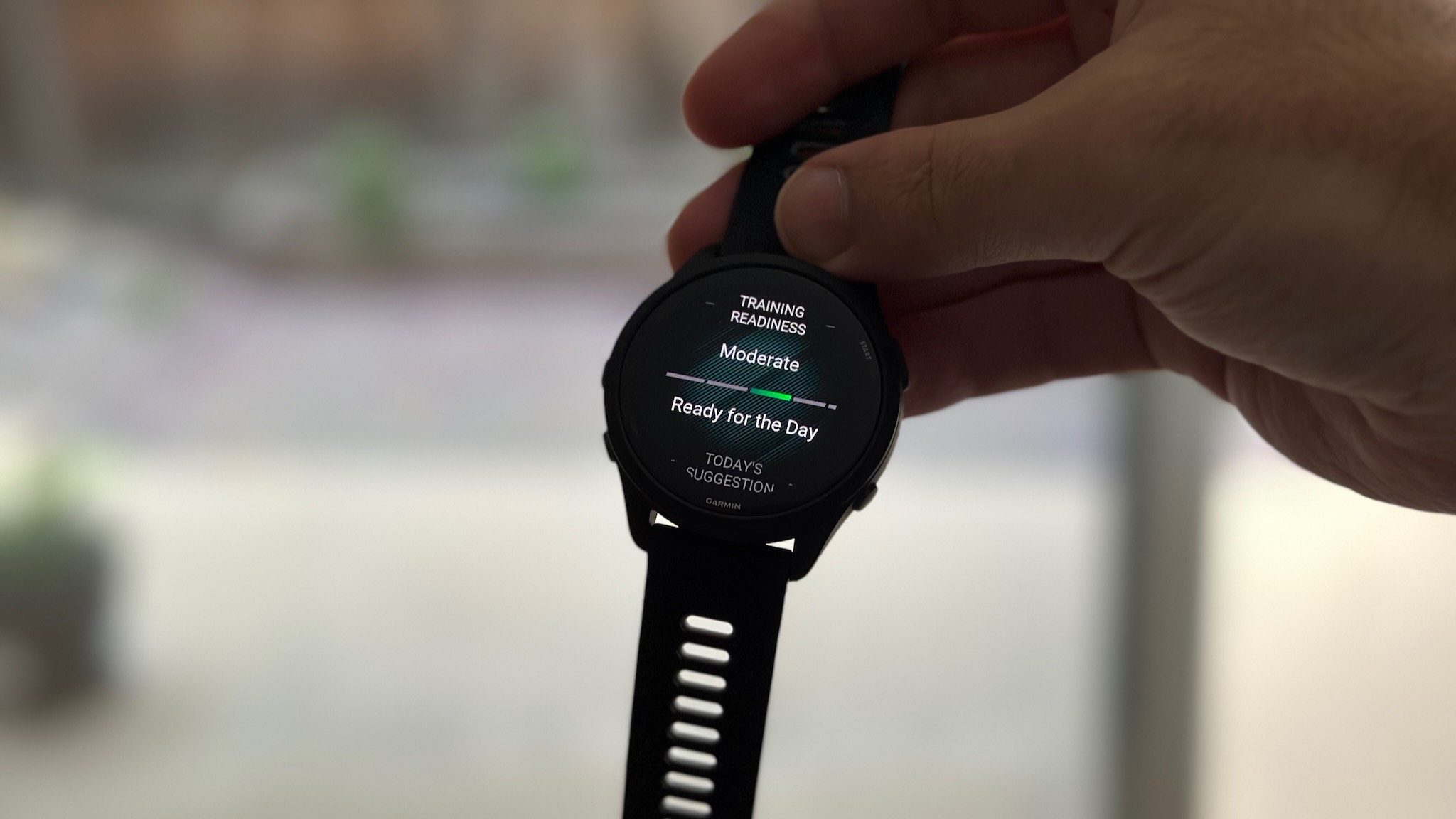
Daily workout suggestions that guide you on what kind of run to do, training load focus graphs on whether you're behind on certain kinds of runs, and the acute load graph to show whether your weekly load falls within the optimal range to improve your VO2 Max are all vital tools that help our Wearables Editor improve every day.
For context, the Venu 3 does give you useful running tools like a post-run recovery time estimate and a vague "workout benefit" summary. It just doesn't go into enough detail; it's better suited for casual runners who spend more time doing other activities like gym or HIIT workouts.
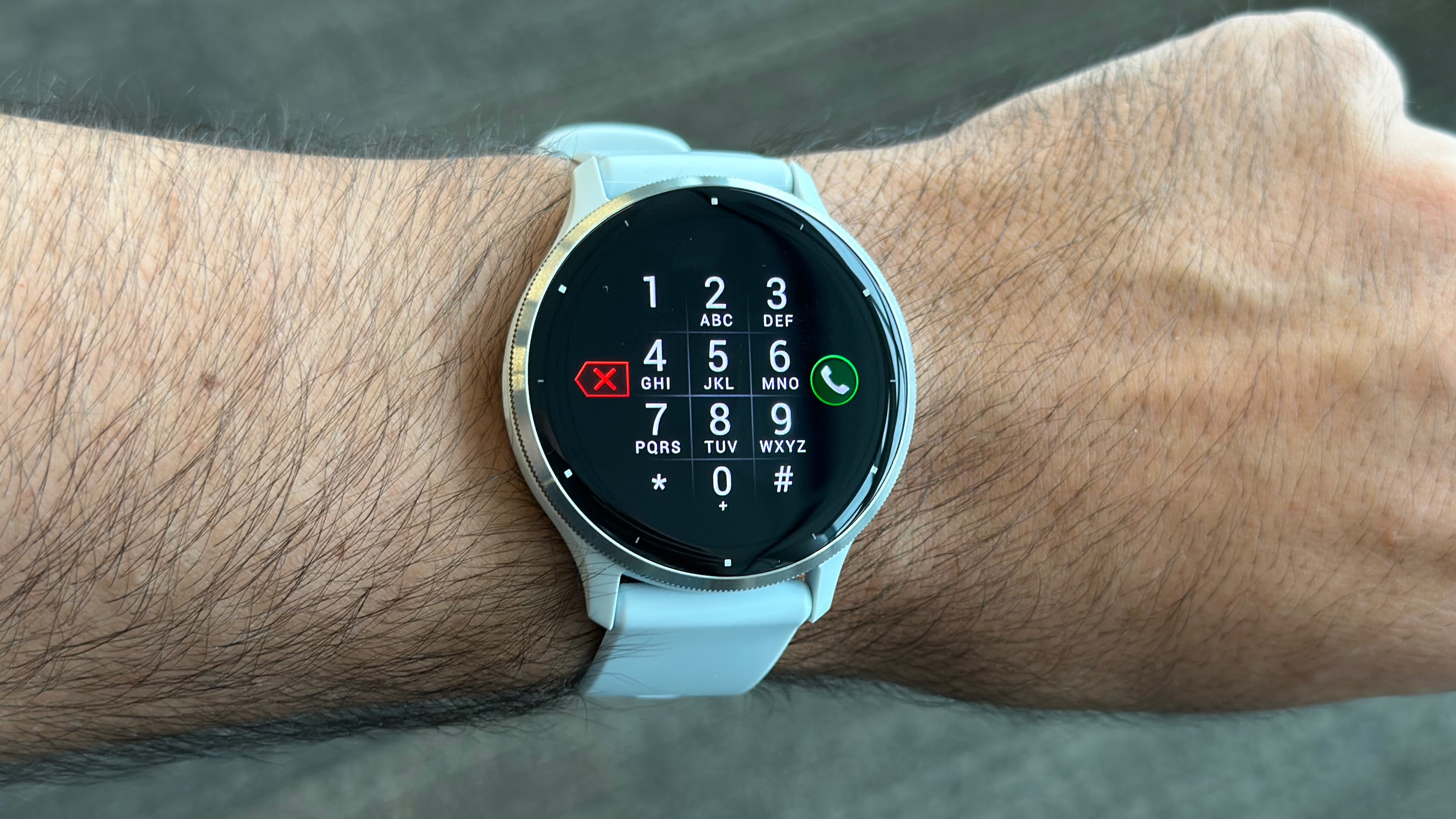
That said, the specialized Forerunner 265 misses out on plenty of mainstream tools that you typically get in an expensive fitness watch. First and foremost, the Venu 3 has its mic and speaker for Bluetooth calls. Our reviewer found that the speaker quality isn't as good as it could be, but it still works in a pinch.
We've already discussed the ECG and skin temp readings, but you also get Garmin's new Sleep Coach widget that quantifies how well you slept based on data like sleep zones and stress data, pushing you towards better habits. Plus, you'll appreciate the Meditation app to mix in with all of your exercises.
Even though the Forerunner series caters to runners, I do hope it gets the Venu 3's excellent wheelchair mode, which we've tested and loved; it handles activity tracking much better than your typical Apple or Samsung watch. And since you'll often see wheelchair divisions during marathons, it's clear that there is a niche market for athletes who want training load data and push count instead of step count.
Garmin Venu 3 vs. Forerunner 265: Which should you buy?
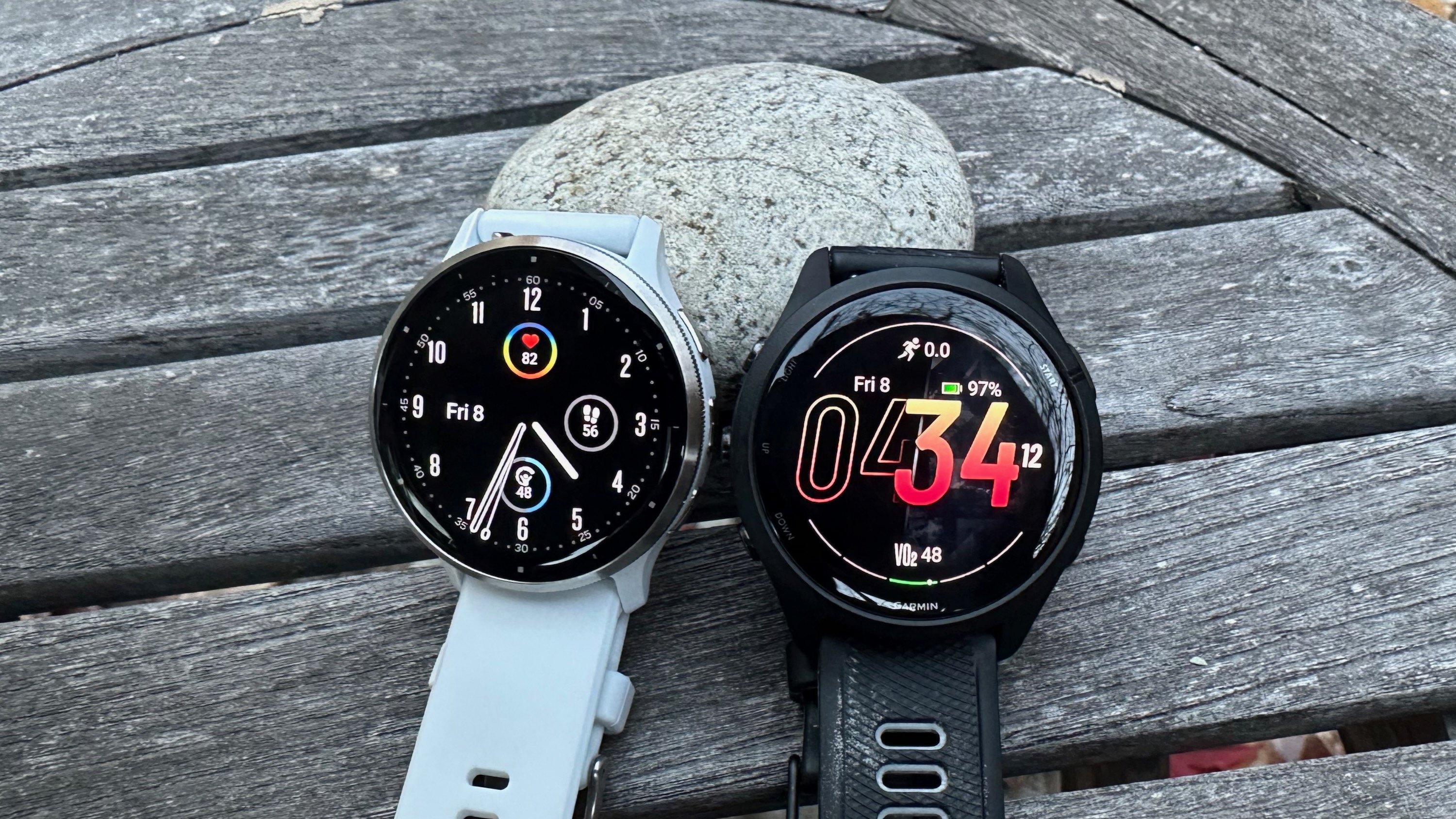
The Garmin Venu 3 vs. Forerunner 265 battle has a clear winner...but the answer depends on your own criteria for what you need in a smartwatch.
The Garmin Venu 3 is thinner, more stylish, and better at tracking your personal health and sleep habits. The display is larger in both sizes, and it has most of the Garmin training essentials you could want, plus the option to answer phone calls from your connected phone. As an all-around health and fitness tracker, it's a better option.
That said, the Forerunner 265 gives you in-depth metrics for outdoor workouts like running, swimming, and cycling that Venu 3 owners would probably appreciate. Especially for runners, it'll be very hard to pass up training load and effect data, not to mention dual-band GPS.
If you want a mixture of both, you should look at the newer Forerunner 570 or 970; you could even consider the squircle Garmin Venu X1, or possibly wait for the Venu 4. But generally speaking, both the Venu 3 and Forerunner 265 are excellent watches that haven't lost their edge and could save you hundreds of dollars compared to newer models.

For gym-goers
Choose the Garmin Venu 3 for Bluetooth calling and voice assistant commands, a more svelte design with a larger display, and health data not found on any other sub-$500 Garmin watch. Don't choose it if you're a serious runner and don't like touch controls during workouts.

For serious runners
Choose the Garmin Forerunner 265 if you're a self-guided runner who needs help deciding what kind of runs to complete to improve your fitness, or like to race against past times on the track or trail. Don't choose it if you want AFib detection, a non-plastic look, or a wheelchair mode.

Michael is Android Central's resident expert on wearables and fitness. Before joining Android Central, he freelanced for years at Techradar, Wareable, Windows Central, and Digital Trends. Channeling his love of running, he established himself as an expert on fitness watches, testing and reviewing models from Garmin, Fitbit, Samsung, Apple, COROS, Polar, Amazfit, Suunto, and more.
You must confirm your public display name before commenting
Please logout and then login again, you will then be prompted to enter your display name.
